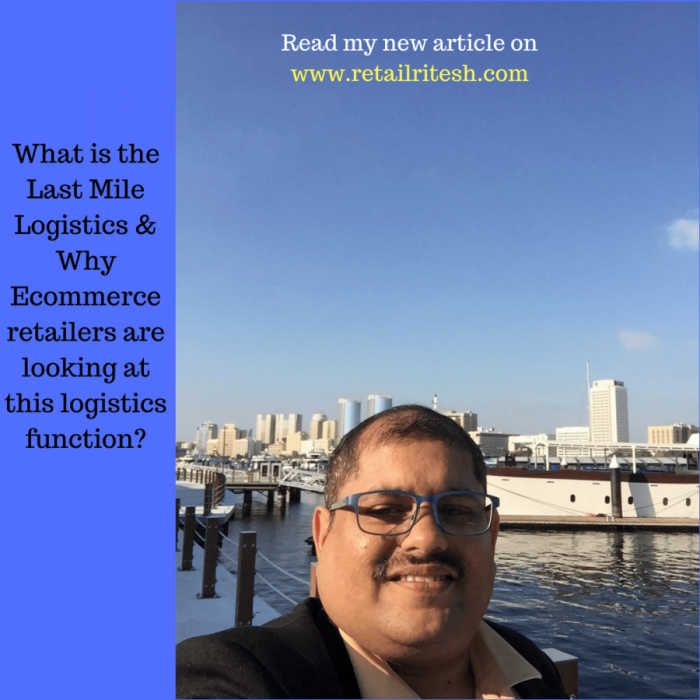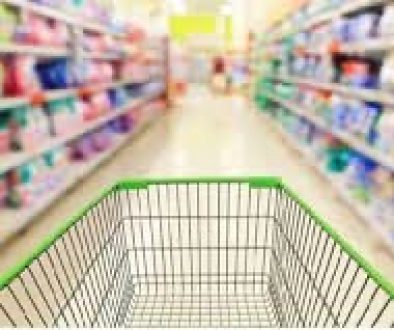What is the Last-Mile Logistics & Why Ecommerce retailers are looking at this logistics function?
Stage set up for the Last-Mile logistics
Recently, there was a news headline in one of the business dailies in UAE under “Last-mile Logistics headline” about one of the region’s leading e-commerce platform to initiate grocery deliveries to its customers.
The headline got my attention and prompted me to deep dive more about “last-mile logistics” and why it has suddenly become the “blue-eyed” function for major e-commerce players in the region.
I am sure my article and its insights would help my readers and blog followers in understanding the importance of logistics function and how Omni-channel retailers are using it to their advantage.

What is the “last-mile logistics”?
Last-mile logistics refers to the final step of the delivery process from a distribution center or facility to the end-user. Although the name implies, it is the final mile delivery, actual last-mile delivery can range from a few blocks to 50 or 100 miles.
Most often, last-mile logistics involves the use of courier or small package carriers to deliver products to consumers.
Why is it crucial for e-tailers or e-commerce players?
It’s pertinent to understand the logistics process in any e-commerce company.
The Logistics Cycle in e-commerce can be broken down into 5 major components, first-mile delivery, fulfillment, processing/sorting, line haul, and last-mile delivery. (For some lean start-ups, it involves 3-4 components only)
- First-mile delivery: This involves picking up goods from the sellers and transporting it to the e-commerce retailer’s fulfillment center or directly to the mother warehouse.
- Fulfillment: Post first mile logistics, the next phase that follows is fulfillment, which involves picking and packaging of products once an order is placed on the website and then moving it to the mother warehouse.
- Sorting: After fulfillment, the products are sorted on the basis of the final delivery location.
- Line-haul: This stage involves connecting the main supply center with the main demand center, via land or air.
- Last-mile delivery: This is the last however the most important phase of the logistics cycle. It involves the dispatch and shipping of products from the mother hub and to the delivery hubs, from where they are delivered to the end-customers.
The reason why “Last-mile delivery” becomes critical is due to the fact that the majority of customer complaints in any e-commerce company are pertaining “Late deliveries” which are mainly due to lack of processes in workforce management, no real-time coordination between fulfillment teams and last-mile delivery teams.
Customer returns and the ability of a retailer to quickly process the returns to enrich customer experience is another major challenge faced by e-commerce retailers.
learn about the business model of food delivery apps, click here.
The emergence of new entrants in “last mile logistics”
Companies such as Amazon have already jumped into the fray with its Amazon Prime Air service that it hopes will soon use small drones to deliver packages in 30 minutes or less. Drones, droids, and parcel copters are here to stay.
Future for Last-mile logistics companies:
Companies like Uber eats, Deliveroo has mastered the model of Airbnb but for transportation/logistics.
Technology has allowed these companies to leverage their advantage and offer jobs to anyone with a car or bike. They are able to analyze data and figure out how to do the job for less. They can fill capacity in vehicles that weren’t previously open to them.
I feel the future for Last-mile logistics providers is very promising provided they adapt to technology advancements at the earliest & ride the disruption wave.
Case study: Carrefour Valet trolley (home delivery services) available in Dubai.
Hypermarket giants like Carrefour have been fast enough to realize the importance & advantages of last-mile logistics for enhancing their customer experience and also leading to customer retention strategy.
Today in Dubai, Carrefour offers a Valet trolley facility to its customers. Leave your trolley at their store and have your items delivered to your doorstep at your convenience.
The benefit to customers:
- Convenient shopping experience without going through hassles of pulling overloaded trolleys to parking lots etc.
My article would definitely help budding entrepreneurs and start-ups who are either venturing into e-commerce or are already an established player. I would be more than glad to share my knowledge and wisdom on “Last-mile logistics” with budding entrepreneurs in case they need any of my assistance to build up their e-commerce model. My connections can reach me on riteshmohan@yahoo.com if they wish to know more about this exciting tool.
About the author:
Ritesh Mohan is a passionate retail professional with over 20 years in the Retail sector, handling some of the biggest brands in beauty, fashion, and fragrances retail & FMCG sector. Ritesh has been instrumental in the growth of some of the regional brands as well in the Middle East region. He specializes in Retail management, Product development, and Brand Management, Retail Operations, Sales Management and Franchising & Business Management. He strongly believes in empowering business owners with his wisdom & experience of around two decades in the industry.





What is the Business Model of food delivery apps? - Retail Ritesh
January 6, 2019 @ 9:01 pm
[…] (Want to learn more about last mile logistics? click here) […]
Effective Retail Store Operations – A winning strategy. - Retail Ritesh
June 8, 2019 @ 7:56 pm
[…] Learn about the business model of last-mile logistics, click here. […]
Top 8 Retail trends to dominate 2021. - Retail Ritesh
January 4, 2021 @ 9:00 am
[…] To learn more about last-mile logistics, click here. […]